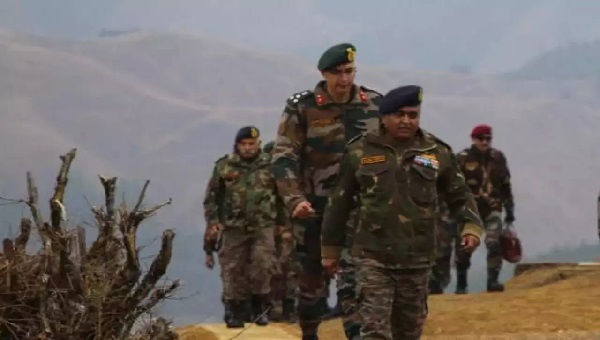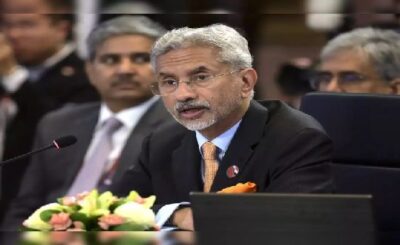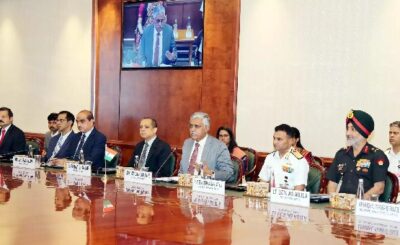Pentagon’s indiscretion leaves Army red faced
-: R Muthu Kumar:-
Indian defence and security establishment have been rattled by American defence establishments’ revelation on the proposed number of armaments they have planned to purchase from America. This is a shocker as the entire terrorism world now knows what is going to be acquired and will be used by the Indian Army in thier armament.
Indian Army Chief Gen Manoj Pande concluded a four-day visit to the US on Friday. During the trip, he held high-level talks with his American counterpart Gen Randy George and other senior military officials, visited I Corps Headquarters at Joint Base Lewis-McChord (JBLM) and was briefed about the Stryker Unit (Infantry Combat Vehicle) which has been offered by the US for co-manufacturing in India.
But a big question hangs in the air. Many in Indian defense circles are questioning whether New Delhi will be wiling to get into another military sale in the wake of a much-touted, and now well-known, MQ-9B Sky Guardian drones deal.
The US announced earlier this month that Congress had been notified of the potential sale of the UAV, a version of the Predator drone, to India, estimated at around $ 3.99 billion.
The US Defence Security Cooperation Agency (DSCA) released a statement on February 1 that the State Department had approved a possible deal, which includes the sale to India of 31 MQ-9B Sky Guardian UAVs and other weapons and electronics, spare parts and accessories. The Indian public sphere went into a frenzy. Indeed, the South Asian nation would be finally getting the most lethal combat drones in the world, deployed during the Afghanistan war and for targeting top ISIS and Al Qaeda leadership.
According to the Pentagon, “the proposed sale will improve India’s capability to meet current and future threats by enabling unmanned surveillance and reconnaissance patrols in sea lanes of operation”.
However, authorities in the Indian defense and security establishment were rattled by the official statement, according to sources familiar with the situation. This is largely because the statement not only disclosed which missiles, bombs, radars, and other related military equipment are part of the MQ-9B deal but also the exact numbers to be delivered.
According to the US statement, the whole MQ-9B RPA deal consists of 31 MQ-9B Sky Guardian aircraft, 170 Hellfire missiles, 310 Laser Small Diameter Bombs, 161 Embedded Global Positioning & Inertial Navigation Systems, and other related equipment. Even the number of training missiles (16) and laser bombs (8) were also mentioned, besides the radars, transponders, IFF (Identification of Friend and Foe), radio sets, and terminals.
The US has a pick-and-choose policy when it comes to disclosing information about weapons and military equipment, depending on its relations with the country involved.
Understanding this US’ double standard India kept distance from fostering defence relationships with USA.
It is not the first time India has suffered this snub from the US. Post the 1965 war with Pakistan, the US had stopped all arms supplies to India, which had begun soon after the ‘62 war debacle against China.
From there on India favoured Russia and their way of doing trade and technology transfers.
This time too India was aware that US might stall the deal due to ongoing diplomatic issues revolving around the pro-Khalistan movement activist Gurpatwant Singh Pannun, who is now based in the US.
This pro-Khalistan movement is active in both Canada and the US, as well as in the UK and several other countries and that is now the pinprick as. New Delhi has on many occasions raised concerns with its partners in the West over the “freedom” given to activists in their countries despite their alleged threats to public figures in India, including to Prime Minister Narendra Modi.
Ties with Canada and the US encountered severe turbulence last year when Canadian Prime Minister Justin Trudeau linked “Indian agents” to the killing in British Columbia last June of prominent Sikh separatist Hardeep Singh Nijjar, sparking a diplomatic rift, in particular between Ottawa and New Delhi.
Two months later, a US court indictment alleged that an Indian government official was involved in an assassination attempt against Pannun that had been foiled by the FBI. While New Delhi dismissed the Trudeau government’s allegations as “absurd” and “motivated,” and demanded that Ottawa provide evidence, in the case of Pannun the Indian government formed a high-level committee of investigation.
As follow up, US President Joe Biden decided not to attend India’s Republic Day celebrations, despite being invited by Prime Minister Narendra Modi during the G20 leaders summit the previous September.
The sale of 31 MQ-9B RPAs announced in this background is a required armament for Indian defence since its arch-rival and neighbor, China, possesses a strong flotilla of armed drones, which it supplies to African and Gulf countries.
India is even more concious and concerned that Pakistan too has procured combat drones, specifically the Bayraktar TB2, from its close ally Turkey.
Right now we have only the surveillance purpose two-decade-old Israeli drones and we do not not have any combat drones.
Hence the the proposed sale of the MQ-9B to India will, as the US statement claims, supports our national security objectives and helps improve our security.
But with all the details of the combat drones that India is likely to get from America is in public domain clearly stating the actual quantities and capabilities, well not and enemy find a way to skirt the defence system and find mark for deadly strikes?








